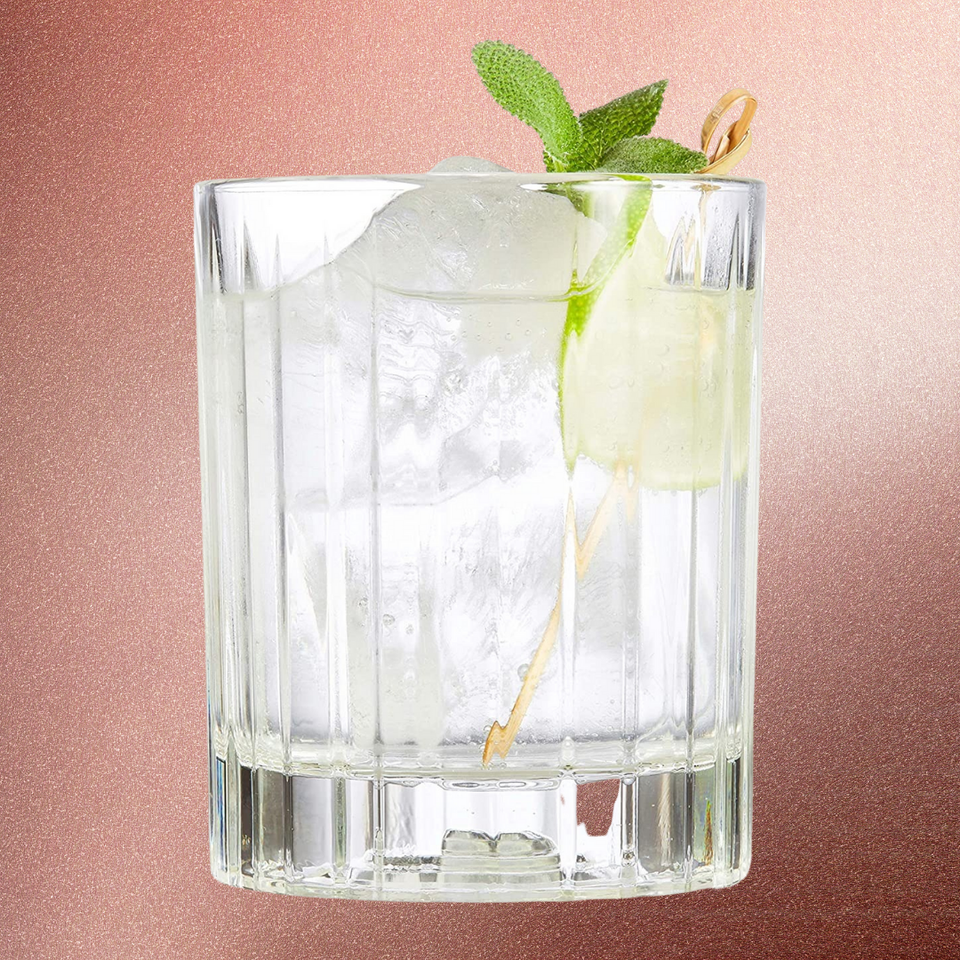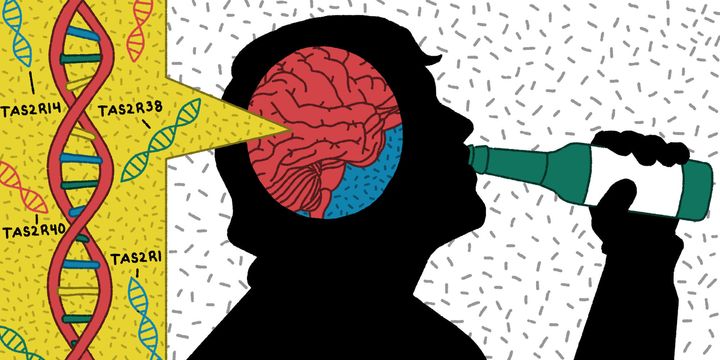
Even casual beer drinkers have likely noticed the meteoric rise of India pale ales over the past decade, but the spotlight-stealing brew can be polarizing.
Maybe you love IPAs, maybe you hate them. Either way, your strong feelings about this beer style have origins beyond your control. Much in the same way we react in different ways to the flavor of cilantro, our reaction to hoppy beers is based, in part, on our genes.
Here’s how it works: A major characteristic of IPAs is bitterness, and how humans react to bitterness is rooted in instinct and genetics.
Thanks to evolution, we’re born with an instinctive “blech” reaction to anything that tastes bitter. Our early ancestors were hunter-gatherers, and a primal reaction to bitterness helped them avoid poisonous plants. Today, this protection is rather irrelevant, notes John Hayes, director of the Sensory Evaluation Center at Penn State.
“A lot of toxic things aren’t bitter, and a lot of bitter things aren’t toxic,” says Hayes, who has a doctorate in nutrition. Plus, he explains, today we have regulators like the Food and Drug Administration to tell us which foods are safe to consume.
“I’m not a hunter-gatherer, so I don’t need a taste receptor on my tongue to tell me to eat this plant but not that plant. But these receptors do drive food choices,” Hayes says.
While we no longer depend on it for survival, our perception of “bitter = bad” has stuck with us.
“Every single person on earth is born with innate preferences,” says Dr. Nicole Garneau, whose doctorate was in microbiology, immunology and pathology. “Babies don’t have a preference for sour or bitter; they like sweet because of milk, and they can detect and like umami because of the protein in milk.”
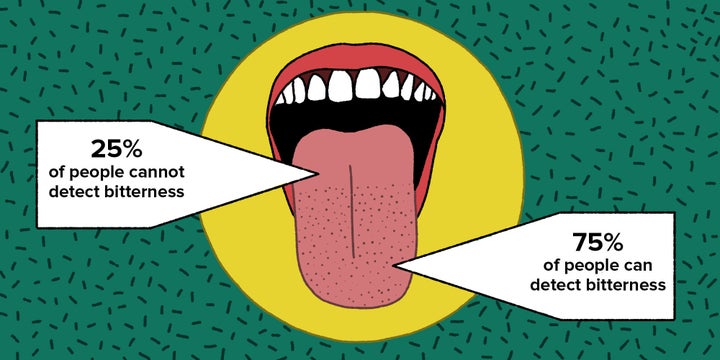
Beyond our instincts, our reaction to bitterness is in our genes. Garneau, who serves as health science curator at the Denver Museum of Nature and Science and director of its Genetics of Taste Lab, explains that humans have 25,000 genes that determine how our bodies function. Of those 25,000, two genes affect how we perceive sweetness, two affect umami and a comparatively whopping 40 (25 confirmed, 15 hypothesized) affect bitterness.
The TAS2R38 gene has become a poster child for this bitterness group. However, both Hayes and Garneau say it is only one piece of the puzzle. While TAS2R38 correlates with alcohol intake, the hops in beer activate a different set: TAS2R1, 14 and 40, Garneau says. She explains how these genes control our reactions to tastes.
“The genes make a protein that sits in your taste buds, in the papillae on your tongue, acting as a receptor,” she says. “Molecules from food sit atop this receptor and send signals to your brain, and the brain can say, ‘That’s bitter.’”
Some of us have differences in these genes. Our genes are made of codons, themselves made of nucleotides. If these nucleotides are arranged in a different order for a particular codon, it changes how that gene behaves. A different order for a tasting receptor gene changes the receptor’s shape, so the food molecules don’t bind and the signal can’t travel to the brain: No bitterness is detected. Twenty-five percent of the population can’t detect bitterness.
In addition to this simple contrast — 75 percent of us detecting bitterness, 25 percent of us not — keep in mind that there are 25 to possibly 40 bitterness genes at play in each of us, and each of those affects bitterness detection in different items. Hayes gives the example that he does not like grapefruit but likes hoppy beer. Both of those items are bitter, but he perceives and processes their bitterness differently.
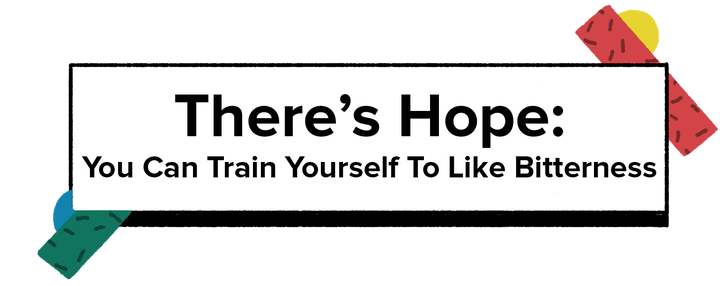
Despite these genetic factors and our evolutionary inclination to dislike bitterness, many of us have come to rely on our daily doses of bitter coffee or our salads full of bitter kale.
“The role of learning is hugely important with food choices,” Hayes says. “It’s so multifactorial, from culture to cost to availability to parental modeling to positive social valuation to flavor consequence.”
For example, he says: “You can be from upstate New York and love Szechuan food. We learn to like cuisines other than our own. Whether we do is a function of personality, seeking what’s new versus being afraid of what’s new or different.”
Both Hayes and Garneau point out the importance of flavor consequence and conditioned taste aversion. We develop an aversion for a food if we have a bad experience with it, such as becoming ill. Then we don’t want to eat it again.
Flavor consequence, on the other hand, can be positive. Hayes notes that hardly anyone really likes bitter beer the first time they try it. However, they drink it again because of social pressure or motivations other than taste. They get positive post-ingestion consequences, like having a good time with friends, and learn to pair that positive reward with that taste.
With the growing popularity of IPAs, it’s clear the quest for big flavor has conquered our human dislike for the bitter taste. We’re willing to tolerate the risk of cringing from bitterness to try that first IPA. Twenty-five percent of us won’t even detect the bitterness, so it’s smooth sailing from there. Of the 75 percent of us who do, some of us will decide it’s simply not worth getting accustomed to. Some of us will have other positive rewards aside from taste and so will keep drinking IPAs, liking them more with every pint.
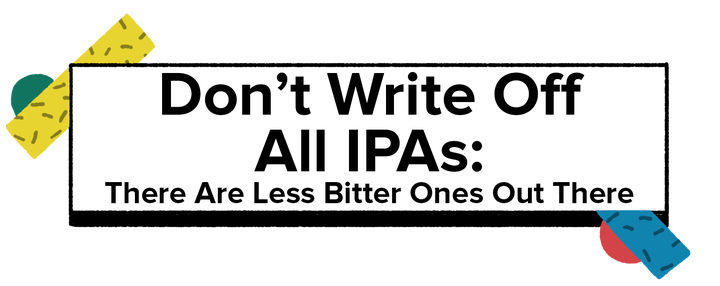
If you’ve written off IPAs because of their bitter punch, it might be worth trying the relatively nascent New England IPA substyle. The NEIPA is characterized by its hazy appearance and juicy finish. While the beer is aggressively hopped, the hop varieties used and how they are added in the brewing process make a beverage that’s more juicy and less bitter ― or at least perceived to be less bitter. This makes one wonder: Were NEIPAs created as a response to the fairly common dislike of bitterness?
“People’s taste buds got bludgeoned by bitterness from IPAs for so long,” says Sam Richardson, co-founder and brewmaster at Other Half Brewing Co., a purveyor of NEIPAs (among other styles) that have garnered a cult following. “Humans are designed to like sugar. [NEIPAs are] not necessarily sweeter, but there’s the perception of being sweeter.”
Richardson says that until recently, the goal was to make fairly bitter beers — people wanted that in their IPAs. Although there are still certainly plenty of imbibers in search of bitterness ― Other Half is one of many breweries that continues to brew more traditionally bitter styles ― a new objective in brewing is to create other IPAs that are low in bitterness but high in hop flavors and aromatics.
Simply put, beer’s bitterness comes from hops. All About Beer explains that, in the brewing process, heat converts the alpha acid compound in hops into iso-alpha acid, “the main compound responsible for bitterness.” Hops made their way into beer centuries ago to protect against spoilage, and brewers soon realized that they also added an element of bitterness that perfectly balanced the sweetness of the beverage’s malt.
With the portfolio of flavors and bitterness levels in different varieties of hops and the ways they’re used by brewers, however, it’s far from a clear-cut connection that the more hops a beer has, the more bitter it is.

The scale for measuring bitterness in beer, IBUs, isn’t as much help as you might think.
It stands for International Bitterness Units, and according to The Brew Enthusiast, it’s “a chemical measurement of the number of bittering compounds, specifically isomerized and oxidized alpha acids, polyphenols, and a few other select bittering chemicals, that make your beer taste bitter.”
Those bittering compounds don’t always translate to a bitter finished product, though. The amount of bitterness provided by hops is affected by the alpha acid content of each variety and how long the hops are boiled. Also, the adjuncts that brewers add to introduce different flavors can temper perceived bitterness. And the formula for calculating IBUs isn’t accurate when beer is dry-hopped. Add to that how we all perceive bitterness differently and a standard measurement for bitterness in beer seems somewhat irrelevant.
Understanding your instincts and genes means understanding your reaction to bitter beer. We all react based on our human makeup, but we all react differently, and we continue to branch off from our innate coding as we decide to try to get used to certain tastes.
The takeaway is to get busy sampling, and try ignoring those IBUs on the bottle. You may love bitter IPAs, you may prefer the seemingly sweeter NEIPAs, or you might want to drink to your own biology with a fruity lambic.
